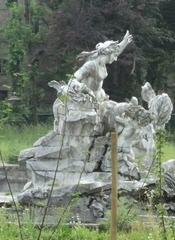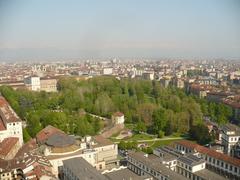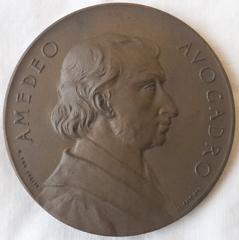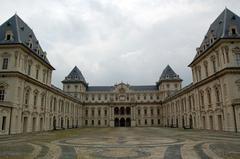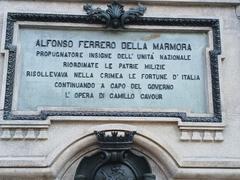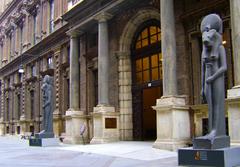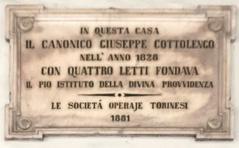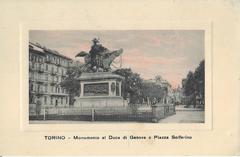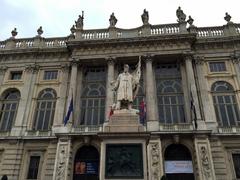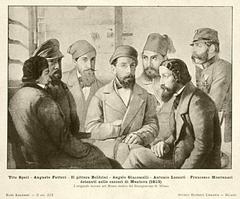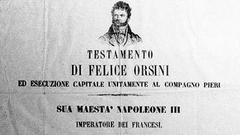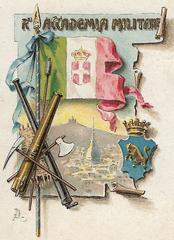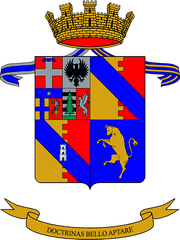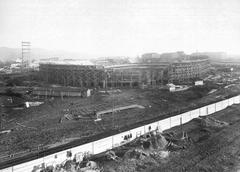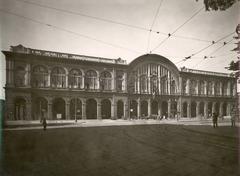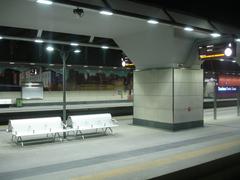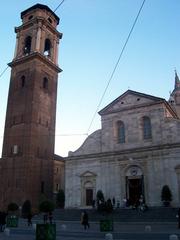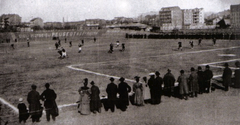
Visiting Giardini Reali di Torino: Hours, Tickets, and Tips
Date: 18/07/2024
Introduction to Giardini Reali di Torino
The gardens’ historical significance is further enriched by their role as a symbol of power, prestige, and unity. They have not only served as a private retreat for the royal family but also as a public space that fostered a sense of national unity following Italy’s unification in 1861. Today, the Giardini Reali di Torino continue to captivate visitors with their lush greenery, architectural marvels, and artistic treasures. The majestic backdrop of the Palazzo Reale di Torino, the exquisite artworks housed in the Galleria Sabauda, and the ancient artifacts in the Museo di Antichità all contribute to the gardens’ allure. This guide aims to provide a comprehensive overview of the gardens’ history, cultural significance, and practical information to ensure an enriching visitor experience (Attractions and Points of Interest).
Table of Contents
- A Royal History Spanning Centuries
- Architectural Marvels and Artistic Treasures
- Visitor Tips for an Enriching Experience
- FAQ
A Royal History Spanning Centuries
The Giardini Reali di Torino, or Royal Gardens of Turin, are not merely a green oasis in the heart of the city; they are living testaments to centuries of history, power, and artistic evolution. Their story is intricately woven with the House of Savoy, the ruling dynasty that shaped Turin and the Piedmont region.
- 16th Century - A Renaissance Beginning. The gardens trace their origins back to the late 16th century, commissioned by Duke Emanuele Filiberto of Savoy. This period saw Turin undergo a significant transformation from a medieval town to a modern capital, and the gardens were integral to this vision. Designed by the renowned architect Carlo di Castellamonte, they reflected the Renaissance style, characterized by geometric layouts, symmetrical patterns, and a harmonious blend of nature and architecture.
- 17th Century - Baroque Grandeur and Expansion. The 17th century ushered in a period of expansion and embellishment under the reign of Dukes Carlo Emanuele II and Vittorio Amedeo II. Influenced by the grandeur of Versailles, the gardens were redesigned in the Baroque style, incorporating elaborate fountains, sculptures, and cascading water features. This era saw the addition of the Fountain of Hercules and the creation of the “Secret Garden,” a secluded space reserved for the royal family.
- 18th Century - Refinement and Leisure. The 18th century brought a shift towards a more refined and leisurely atmosphere. Under the patronage of King Carlo Emanuele III, the gardens were further enhanced with the addition of the Teatro Verde, an open-air theater designed for courtly entertainment. This period also saw the introduction of exotic plant species, reflecting the growing fascination with botanical exploration.
- 19th Century - A Public Park and a Symbol of Unity. Following the unification of Italy in 1861, the Royal Gardens were opened to the public, becoming a cherished green space for the citizens of Turin. This transformation symbolized the monarchy’s desire to connect with the people and establish a sense of national unity.
- 20th Century and Beyond - Preservation and Restoration. The 20th century saw the gardens endure periods of neglect and damage, particularly during World War II. However, significant efforts have been made in recent decades to restore and preserve this historical and cultural treasure. Today, the Giardini Reali di Torino stand as a testament to the city’s rich past, offering visitors a glimpse into the grandeur and artistry of bygone eras.
Architectural Marvels and Artistic Treasures
The Giardini Reali di Torino are not just about lush greenery and fragrant blooms; they are also home to architectural marvels and artistic treasures that add layers of beauty and historical significance to the landscape.
- Palazzo Reale di Torino (Royal Palace of Turin). This UNESCO World Heritage Site, once the primary residence of the Savoy rulers, forms a majestic backdrop to the gardens. Its imposing facade, adorned with intricate details and sculptures, reflects the architectural evolution of the palace over the centuries.
- Galleria Sabauda (Sabauda Gallery). Located within the Royal Palace complex, this art museum houses an impressive collection of paintings by Italian and European masters, including works by Beato Angelico, Tintoretto, and Rembrandt.
- Museo di Antichità (Museum of Antiquities). Also situated within the palace, this museum offers a fascinating journey through history, showcasing artifacts from ancient Egypt, Greece, and Rome.
- The Fountain of Hercules. This monumental fountain, dating back to the 17th century, is a masterpiece of Baroque sculpture. It depicts the mythical hero Hercules wrestling with the Hydra, symbolizing the triumph of good over evil.
- The Secret Garden. Tucked away within the larger garden complex, this secluded space offers a sense of tranquility and intimacy. It features a geometric layout, manicured hedges, and a central fountain, creating an atmosphere of serene beauty.
- The Teatro Verde. This open-air theater, built in the 18th century, is a testament to the courtly entertainment of the time. Its stage, framed by lush greenery, has hosted countless performances and events over the centuries.
Visitor Tips for an Enriching Experience
To make the most of your visit to the Giardini Reali di Torino, consider these tips:
Opening Hours
The gardens are open year-round, but spring and autumn offer the most pleasant weather for strolling and enjoying the floral displays. Arrive early in the day or later in the afternoon to avoid large crowds. Specific visiting hours can be found on the official website.
Ticket Prices
Admission to the gardens is free, but access to the Royal Palace and museums requires a ticket. Combined ticket options are available, allowing you to delve into the history and art of the Savoy dynasty. Check the official website for current prices and any special discounts.
Guided Tours
Enhance your experience by joining a guided tour. Knowledgeable guides provide historical context, architectural insights, and fascinating anecdotes about the gardens. Tours can be booked in advance through the official website.
How to Get There
The Giardini Reali di Torino are located in the heart of Turin, easily accessible by public transportation. The nearest metro station is Porta Nuova, and several bus routes stop nearby. For those driving, there are parking facilities within walking distance.
Accessibility
The gardens and associated museums are wheelchair accessible, with paved pathways and ramps. Accessible restrooms are also available.
Special Events and Nearby Attractions
The gardens frequently host special events, including concerts and cultural festivals. Additionally, nearby attractions such as the Mole Antonelliana and the Egyptian Museum offer further exploration opportunities for visitors.
Pack a Picnic
Embrace the leisurely atmosphere by packing a picnic to enjoy on the garden grounds. Find a shady spot under a centuries-old tree and savor the flavors of Italy surrounded by history and beauty.
Photography Opportunities
Capture the beauty of the gardens with your camera. From the grand fountains and sculptures to the intricate details of the palace facade, there are countless photo opportunities to preserve your memories.
FAQ
What are the Giardini Reali di Torino opening hours?
The gardens are open daily from 9 AM to 7 PM, with extended hours during the summer months. Check the official website for the most up-to-date information.
How much are tickets for Giardini Reali di Torino?
While entry to the gardens is free, tickets for the Royal Palace and museums start at €15 for adults. Discounts are available for children, students, and seniors. Check the official website for the latest pricing.
Are guided tours available?
Yes, guided tours are available and highly recommended for a richer experience. Tours can be booked through the official website.
The Giardini Reali di Torino are more than just gardens; they are a journey through time, art, and the legacy of a powerful dynasty. By immersing yourself in their history, exploring their hidden corners, and appreciating their artistic treasures, you’ll create lasting memories of your visit to Turin. For more information or to plan your visit, check out the official website and follow them on social media.
Attractions and Points of Interest
The Giardini Reali di Torino, or Royal Gardens of Turin, offer a diverse range of attractions for visitors to explore. From opulent palaces to fascinating museums and serene green spaces, there’s something to captivate every interest.
The Royal Palace of Turin (Palazzo Reale di Torino)
A UNESCO World Heritage Site, the Royal Palace stands as a testament to the power and grandeur of the Savoy dynasty. Built in the 16th century, this architectural masterpiece served as the seat of power for the House of Savoy for over three centuries.
Highlights:
- The Royal Apartments: Lavishly decorated with frescoes, tapestries, and period furniture, these rooms offer a glimpse into the lives of the Savoy rulers. (Learn more about the Royal Palace)
- The Royal Armory: One of the world’s oldest and most significant armories, housing an impressive collection of arms and armor from different periods. (Explore the Royal Armory)
- The Royal Library: Home to over 200,000 volumes, including Leonardo da Vinci’s self-portrait, this library is a treasure trove for history and art enthusiasts. (Discover the Royal Library)
The Sabauda Gallery (Galleria Sabauda)
Adjacent to the Royal Palace, the Sabauda Gallery houses an exceptional collection of paintings from the 13th to 19th centuries. The gallery showcases works by renowned Italian and European masters, including:
- Beato Angelico
- Tintoretto
- Guercino
- Rembrandt
The gallery’s collection provides a comprehensive overview of artistic development throughout the centuries. (Visit the Sabauda Gallery)
The Museum of Antiquities (Museo di Antichità)
Located in the Palazzo Reale, the Museum of Antiquities offers a fascinating journey through history, showcasing artifacts from prehistoric times to the Roman era.
Key exhibits include:
- The Turin Papyrus Map: One of the oldest surviving maps of Egypt.
- The Isis Tomb: A remarkably preserved Roman-era tomb.
- The collection of Etruscan artifacts: Providing insights into this ancient civilization.
The museum offers a captivating exploration of the region’s rich past. (Explore the Museum of Antiquities)
The Royal Gardens (Giardini Reali)
Designed in the 17th century, the Royal Gardens provide a tranquil escape from the bustling city. These meticulously manicured gardens feature:
- Geometrically shaped flowerbeds
- Ornamental fountains
- Statues of mythological figures
The gardens offer a serene setting for a leisurely stroll or a relaxing picnic. (Discover the Royal Gardens)
The Botanical Garden (Orto Botanico dell’Università di Torino)
Established in the 18th century, the Botanical Garden is a haven for plant lovers. Home to over 6,500 plant species from around the world, the garden features:
- A greenhouse complex
- A herbarium
- A library specializing in botany
The Botanical Garden offers a fascinating glimpse into the diversity of the plant kingdom. (Visit the Botanical Garden)
The Royal Gate (Porta Palatina)
Dating back to Roman times, the Porta Palatina is one of the best-preserved Roman gateways in the world. This impressive structure served as the main entrance to the Roman city of Augusta Taurinorum. The gate’s well-preserved towers and arches offer a glimpse into the city’s Roman past. (Learn more about the Porta Palatina)
The Cathedral of St. John the Baptist (Duomo di Torino)
Located near the Royal Palace, the Cathedral of St. John the Baptist is a significant religious site. Built in the 15th century, the cathedral houses the Shroud of Turin, a linen cloth believed by some to be the burial shroud of Jesus Christ. (Visit the Cathedral of St. John the Baptist)
The Egyptian Museum (Museo Egizio)
While not technically within the Giardini Reali, the Egyptian Museum is just a short walk away and is a must-visit for any visitor to Turin. It houses one of the world’s largest and most important collections of Egyptian artifacts, rivaling even the Egyptian Museum in Cairo. (Explore the Egyptian Museum)
These attractions within and near the Giardini Reali di Torino offer a captivating blend of history, art, culture, and nature, making it a must-visit destination for any traveler to Turin.
Conclusion
The Giardini Reali di Torino offer a unique blend of history, culture, and natural beauty that makes them a must-visit destination in Turin. From their Renaissance beginnings to their current status as a cherished public space, these gardens encapsulate the rich legacy of the House of Savoy and the artistic and cultural evolution of Turin. Visitors can immerse themselves in the grandeur of the past by exploring the architectural marvels and artistic treasures that adorn the gardens, such as the Palazzo Reale di Torino, the Galleria Sabauda, and the Museo di Antichità. The gardens also provide a tranquil escape with their meticulously manicured landscapes, offering a serene setting for leisurely strolls, picnics, and photography (Visiting Giardini Reali di Torino - History, Tickets, and Visitor Tips).
Whether you’re a history enthusiast, an art lover, or someone seeking a peaceful retreat amidst nature, the Giardini Reali di Torino have something to offer. The gardens’ evolution over the centuries, from a symbol of royal power to a public park celebrating national unity, reflects the dynamic history of Turin itself. By visiting the Giardini Reali di Torino, you not only get to witness the grandeur and artistry of bygone eras but also become part of a living legacy that continues to inspire and captivate. For more information and to plan your visit, be sure to check out the official website and follow their social media channels.
